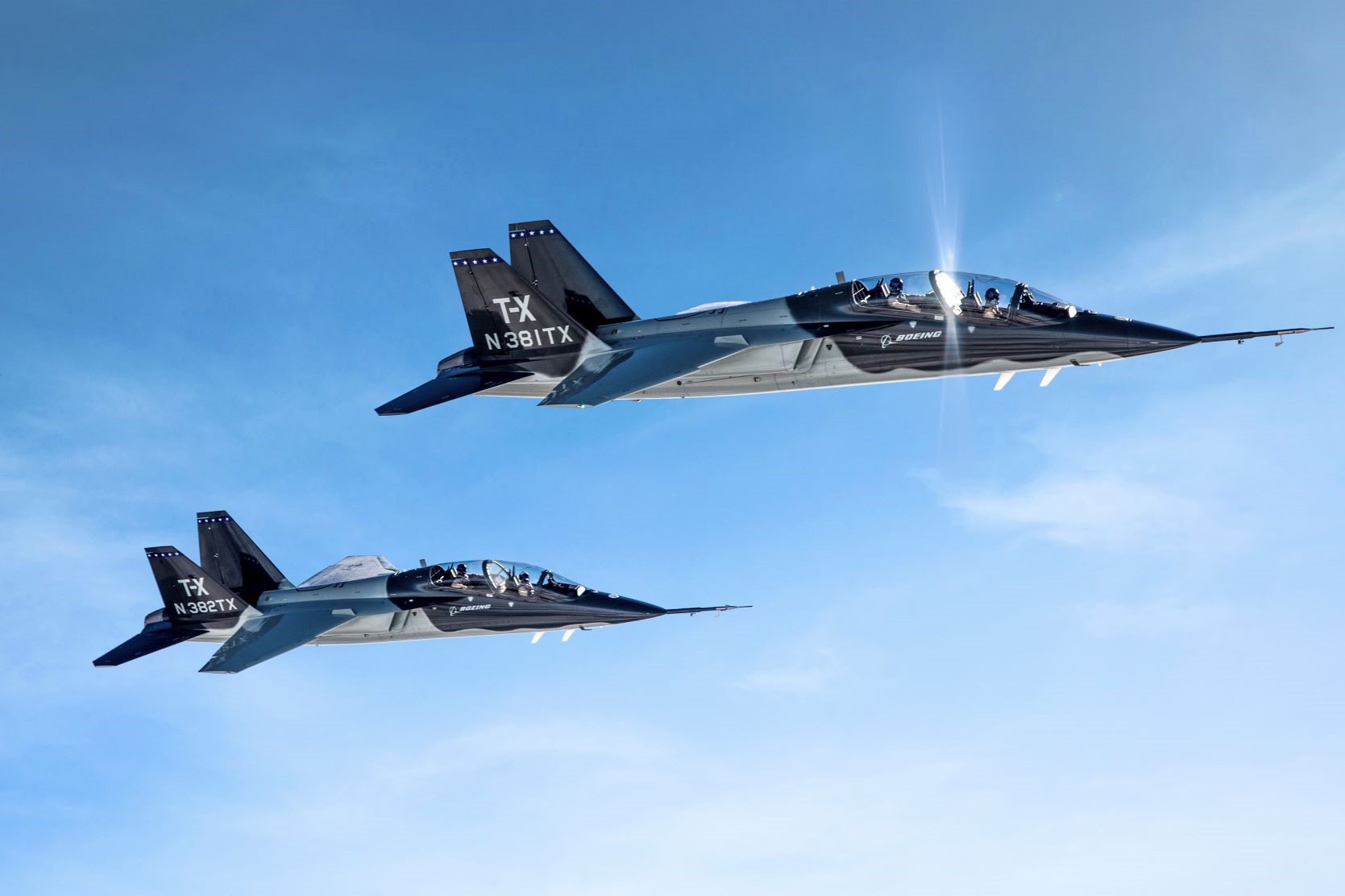
SHAH ALAM: More details on LCA and UAV RFI. The Dewan Rakyat has published the written answers on RMAF LCA and UAV RFI based in questions posed by Tanjung Malim MP Chang Lih Kang. Chang asked the names of the LCA and UAV models and companies involved and the amount of money allocated for their purchase.
The answer from RMAF stated that the RFI for LCA and UAV were issued in December 2018. It said the purpose of the RFI were to obtain the basic information, packages and basic cost in order to prepare rough estimates of the cost and no money had been reserved for the programme.
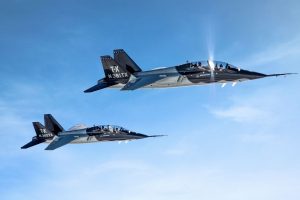
Boeing T-X. Saab
“RMAF has not shortlisted any aircraft or UAV for the time being. As requested RMAF named the LCA and the companies which acted as the agents for them for the RFI. What is interesting about the list is that one aicract, the L-15B from AVIC is represented by two local companies. Two aircraft not mentioned previously by Malaysian Defence are the Aero Vodochy L-39NG and the Boeing TX.
1.Pesawat FA-50 keluaran Korea Aerospace Industries Ltd. melalui syarikat Kemalak Systems Sdn Bhd;
2.Pesawat TEJAS keluaran Hindustan Aeronautic Limited melalui syarikat Forte Drus Sdn Bhd;
3.Pesawat JF-17 keluaran Pakistan Aeronautical Complex melalui syarikat Kharisma Wira Sdn Bhd;
4.Pesawat YAK-130 keluaran Rosoboronexport/Irkut Corporation, Rusia melalui syarikat Sovereign Strategic (Sarawak) Sdn Bhd;
5.Pesawat M-346 keluaran Leornardo/Alenia Aermacchi, Itali melalui Leonardo (Malaysia Office);
6.Pesawat L-15B keluaran China National Aero-Technology Import & Export Corporation (CATIC), China melalui syarikat Takamaya Sdn Bhd;
7.Pesawat L-15B keluaran China National Aero-Technology Import & Export Corporation (CATIC), China melalui syarikat Paragon Avtech Sdn Bhd;
8.Pesawat L-39NG keluaran Aero Vodochody Aerospace, Republik Czech melalui syarikat VisionGen Group; dan
9.Pesawat Boeing T-X keluaran Boeing Defense, Space & Security, Amerika Syarikat melalui syarikat Quantum Virtuality.
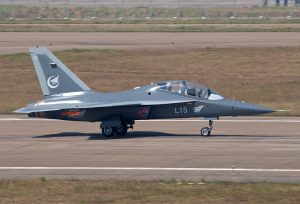
RMAF also provided a similar list of the UAV and the companies representing them.
1.UAV ANKA keluaran Turkish Aerospace Industries, Turki melalui syarikat Unmanned System Technology Sdn Bhd;
2.UAV ANKA keluaran Turkish Aerospace Industries, Turki melalui syarikat Quantum Virtuality;
3.UAV Predator-B keluaran General Atomics Aeronautical, Amerika Syarikat melalui syarikat Insansiz Aircraft System Sdn Bhd;
4.UAV Wing Loong 2 keluaran China National Aero-Technology Import & Export Corporation (CATIC), China melalui syarikat Paragon Avtech Sdn Bhd;
5.UAV Patroller keluaran Safran Electronic & Defense, Perancis melalui Safran Aerospace Defense Security Malaysia Sdn Bhd;
6.UAV CH-4 keluaran China Aerospace Science and Technology Corporation (CASTC), China melalui syarikat Mount Matrik Sdn Bhd;
7.UAV Watchkeeper keluaran Thales, United Kingdom melalui Thales Malaysia Sdn Bhd;
8.UAV Orion-E keluaran Kronstadt Technologies, Rusia melalui syarikat Alaf Research & Technology;
9.UAV Falco Evo keluaran Leonardo, Itali melalui Leonardo (Malaysia Office); dan
10.UAV Aurora keluaran Amerika Syarikat melalui syarikat VisionGen Group
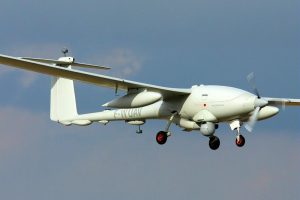
Based on the list, we now know that the ANKA UAV is also represented by two companies Unmanned System Technology and Quantum Virtuality. UMST is a joint venture company between CTRM ( a member of DRB Hicom, SCS Sdn Bhd and Ikramatic Sdn Bhd. As for Quantum a Google search revealed that it’s an IT company. No other information was available.
The list also identified five other UAVs not previously mentioned in Malaysian Defence namely the Patroller, CH-4, Watch Keeper, Orion E and Aurora. It must be noted that both the Patroller and Watch Keeper have been marketed previously to Malaysia while the others are new entrants to the market.
As the Defence Ministry has confirmed that it will be buying the MALE UAV in the next RMK it will be interesting to see which one will be selected for the programme. It must be noted that Jordan recently announced its selling its CH-4 drones.
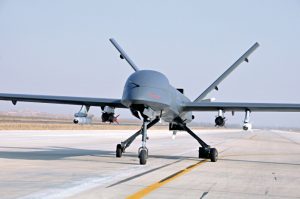
CH-4 drone
And before any one say it in the comments, no, I dont think it is a good idea for Malaysia to buy these drones from Jordan. It is unlikely CASTC will support them even though the drones are almost brand new. It is likely Jordan dumped them as they were not working as advertised so why we should get them even it is cheap.
— Malaysian Defence
If you like this post, buy me an espresso. Paypal Payment

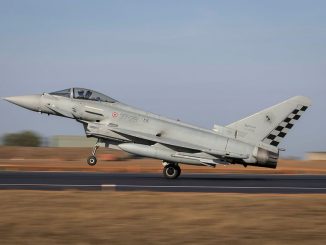
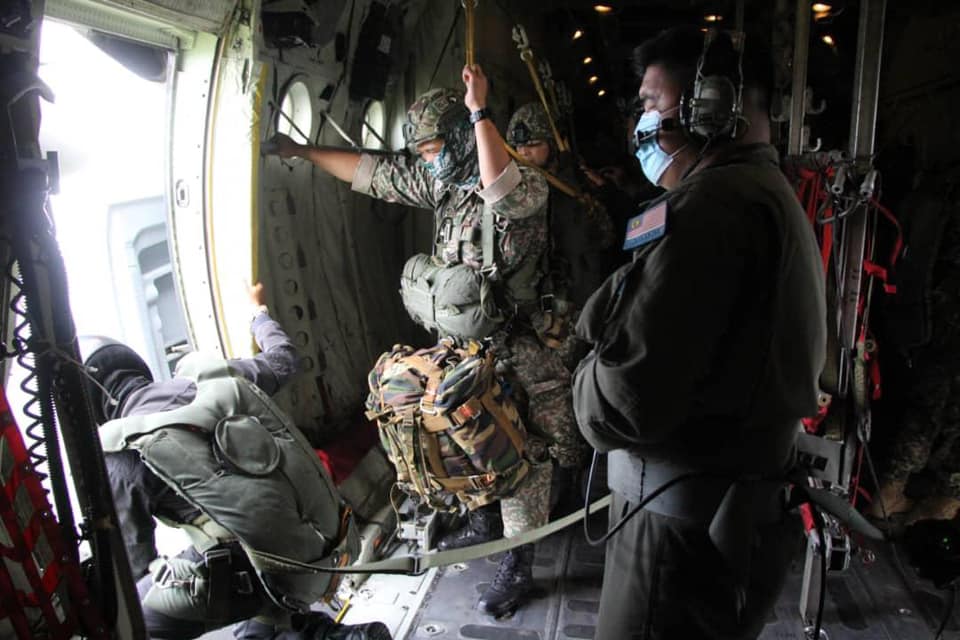
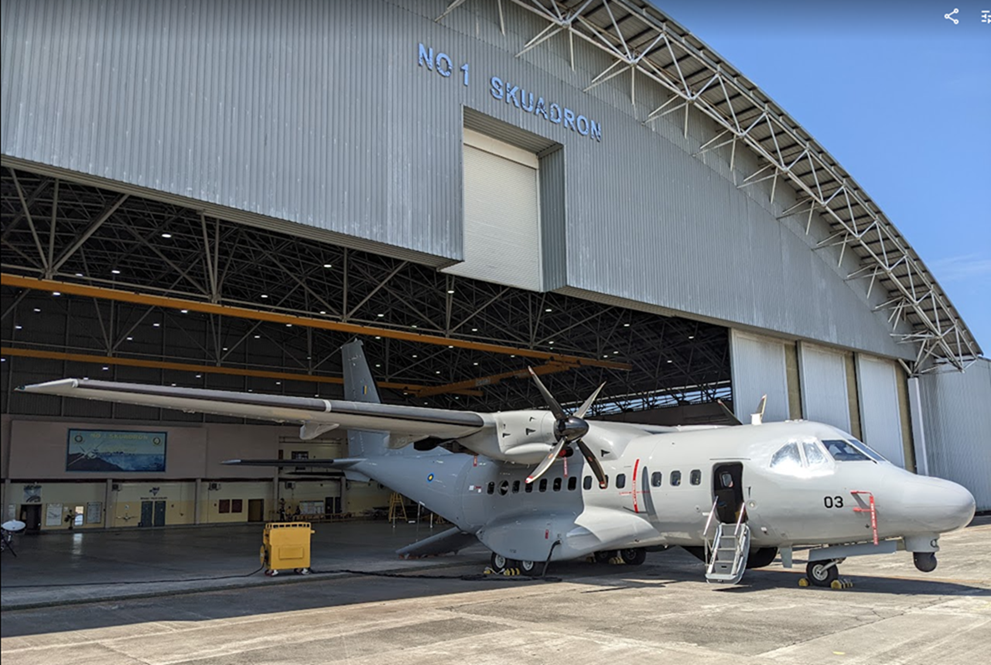
Just a small step in getting the LCA/LIFT and UAV of our own.
In the LCA shortlist, the Gripen is missing altogether. The T-X is a surprise addition promoted by an IT company? The L-39NG, while a great aircraft on its own, does not have the performance to be a credible LCA.
Of the western UAVs offered, IMO the Patroller is the lowest cost among them. There is a few options if you like the platform by itself. The patroller is actually based on the Ecarys ES15 powered glider, with UAV systems by Safran.
http://www.ecarys.com/the-es15/
There are other parties that can convert the ES15 into UAV, like
http://www.uasvision.com/wp-content/uploads/2016/10/Viper-1000cc.jpg
http://www.s-plane.com/wp-content/uploads/2017/02/ES15-320×200-2.png
Anyhow IMO we should try to ask for US EDA predators 1st, before looking at new options.
I think Wing Lung is better choice if compare with CH 4. I think about Aero L-159 Alca but no 1 bting in. Good to have this list. Wish the budget will come soon.
Why is it that the RFI has to go through the middlemen mafia as usual??? This only leaves room for “greasing the skids” as usual. The chosen companies are mostlyl reputed aircraft manufacturing companies who can definitely handle any of these queries directly. Its about time the middlemen are eliminated to drive for better use of tax payer money!
Reply
Well for starters, why would an OEM set up a company here when they have yet to secure a contract? And if a programme have yet to be funded and approved why should an OEM spend money to promote its products here? A local agent would not have to spent much money to represent an OEM. Yes in a perfect world there is no need for agents but this is not a perfect world.
Based on past postings here, I am on the mind that the LCA shall be a 2 seater, supersonic and with commonality with existing missiles and engines of RMAF current fleet. That put FA-50 and Tejas in place.
While the UAVs shall be armed MALE drone with at least 24 hours endurance and Non-Chinese origin. Is it me that find it really hard to fathom spying on China naval activity in SCS with Chinese UAVs? This put ANKA,Patroller and Watchkeeper.
Correct me if i am wrong
Reply
Tejas is basically a single seater jet with a twin seat trainer that’s still under final development. Apart from the FA50 there is the M346, Yak 130 and the L15
The decision to get the Beechcrafts was also driven by the need for a AAR refuelling capability. By this period the handful of A4s with refuelling pods were already retired and a decision was made to get “roll on, roll off” kits for the MPA configured Charlies.
Ironically even after the Beechcraft entered service the formerly MPA configured Charliies were still used for patrolling the EEZ (unsurprising given only 4 Beechcrafts were ordered). A few years ago Chinese bloggers released pics showing a low flying Charlie taking pics of Chinese ships.
The tragedy with MH370 provided the RMAF with an opportunity.to press it’s case for MPAs. A requirement that remained unfulfilled from the early to mid 2000’s when several types were looked at. Post MH370 the government initially showed an interest but like some many other things; the MPA requirement became less of a priority.
@ azlan
” Ironically even after the Beechcraft entered service the formerly MPA configured Charliies were still used for patrolling the EEZ (unsurprising given only 4 Beechcrafts were ordered) ”
Not surprising as we even created a record for the longest hawk operational flight because we use them for SAR!
Right now with only 1 beechcraft operational, that is probably why the hercules is still needed regularly to do maritime patrol missions.
Hazwan,
Ironic maybe but using a Chinese made UAS to monitor Chinese activity doesn’t present any problems. Also, although it’s the Spratlys which first come to mind and the Spratlys where the UAV will probably spend most of its time; we can safely say that the UAV will also be used in other places.
Watchkeeeper?! Hahaha!
That would be my bet for least likely frankly.
I hope a cost estimate is made public early in the acquisition process.
‘The more things change, the more they stay the same’
Okay I’ll admit there are some bidders coming from their official reps (Leonardo, Safran, Thales). But mostly the rest are anonymous & never heard of before. Said go through open tender but all that entails are anonymous middlemen representative companies. Back to the same ol Mahathirism shenanigans again.
Why does just getting RFIs already needs 3rd parties? Were these established equipment makers represented by them 3rd party middlemen during DSA 2018 and LIMA 2019? No!!! So why are these 3rd party middlemen dealing with the Government on their behalf? I mean, Boeing doesn’t have a local or regional official representative? That’s incredulous! Sigh…..
Going back to the LCA. The T-X is the most newest, having been just only recently selected by USAF as their future trainer. Though its the least mature platform, it was design onset with an eye for pilot transition to 5th gen stealth fighters. This will help to prolong the lifetime usage of the planes, and will provide the perfect step up if ever the MRCA program moves onto 5th gen planes.
Plus it did beat out the other prime T-X candidates that were too in LCA bidding (T-50, M-346 as the T-100.
Hoping they would get the L-39NG or at least consider them seriously. That thing is built like a tank and is favorite among african countries , combining its eastern bloc root (ruggedness and relative simplicity) with latest western manufacturing technology and avionics
Nigeria pretty much got them L-39 working after being left in disuse for years with Aero’s assistance.
…… – with only 1 beechcraft operational, that is probably why the hercules is still”
Even when all 4 available the Charlie’s still had to do it as Beechcraft deployments to Labuan usually consisted of only 2 and at times they were busy doing other things. At times not all were operational.
Which is precisely why getting only 2 now is sheer folly. Another case of getting “a bit of everything” but “not enough of anything”. Adding another 2 will not bankrupt the nation; another case of short sighted politicians willing to take risks with our security and lack the political will.
Yes better 2 than nothing but operational flexibility is severely curtailed with just 2. Yes also to the fact that there are CNs that can be converted (plus the remaining VIP configured one owned by the PM’s Department) but for unknown reasons the government shot down the idea. A problem with this (irrespective of future plans as part of the CAP55) is that not all circumstances will can for a Charlie or A400M. Cheaper and more practical at times to utilise a CN.
Boeing T-X ???but just RFI only..i do hope KAI FA-50 win..or M-346 ..or any western design..same with MALE UAV, better get western design rather than china made or turkey made
Jordan sale of CH-4: 1) Jordan (RJAF) purchased CH4 on urgent basis with the others’ money. Now war is over and RJAF can’t afford to keep it in stock with own fund. Because of the poor financial situation, they can not afford the normal maintenance of equipment. 2) Sale of second hand military hardware is normal practice in Middle East. U.S. always does so. Jordan too. Some years ago Jordan sold second hand F16 to Pakistan. Apart from CH4, RJAF would like to sell Russian and American equipment also for this round, e.g. Russian helicopter. 3) Western media reported this issue with their own imagination and interpretation to their own interests.
4) CH4 contract for RJAF has been executed smoothly. All the payments have been received. If the user is not satisfied with CH4, they will not do so.
5) There are 7 potential buyers already, the competition is quite fierce. The open bidding is on process.
Please get the facts right before publishing….there are 10 countries already using CH4.
I think Mindef and RMAF should consider on logistic and maintenance’s support evaluation of asset 1st, for example most importance on aircraft was the engines and avionics systems, if the air force choosing the T-50 or T-X, their using same engine GE-404/ GE-414 similar to F/A-18 engine…
Budget wise, the L139NG and the L15B would be the lowest as both are ranged between USD10million to USD15 million USD fly away cost, while the rest are above USD20 million a piece. If the brochure for the L15B to be taken in full context, with its Mach 1.4 speed, AESA radar and BVR capability with PL12 missiles, it would be a good choice.
Zambia bought 6 L15 (not sure A or B) for USD100 mil in 2014, say 5% inflation p.a since that, it will be USD120 mil for 6 or around USD20 mil today’s price.
But not sure how the maintenance cost will be
@ Haffiz
The L-39NG has even lower performance than our current hawks! If push comes to shove, it probably can be used as a LIFT, but for LCA? IMO it cannot be used as LCA. The L-159 probably can (but no longer produced/promoted), but for the same price of the L-159 why not just take the FA-50 instead?
IMO the L-39NG is on the same league as the leonardo M-345 (not M-346) or the pilatus PC-21.
@ kamal
Zambia verison is the L-15A with the non afterburning engine. So it is not supersonic capable.
Well there is an even cheaper chinese 2 seat supersonic fighter trainer, just USD 7million each brand new…
http://1.bp.blogspot.com/-hKtdPIRnlM8/Wo9lsJzehUI/AAAAAAAAg5Y/UcknFaofXdYYmDC6Jkx0JomGvW9UTii3ACLcBGAs/s1600/webftc-2000.jpg
I would say T-X is the best choice. New design, more support since chosen by US to replace their trainers and common engine as our f18. This is the best rational and no idea why some keep insisting on other jets. Even korean jets is more expensive than T-X. Thats my 2 cents.
………..
But i though JL9 (upgraded derivative of JJ7 or copied 2 seater MIG21 trainer) only start full rate production in China late 2017. I think first export customer is Sudan.
Best regards,
Kamal
@ kamal
Im just joking…
Would be great for dissimilar air combat trainings though.
TX is less expensive because it didn’t carry any armament whatsoever so the whole avionic suite is simplified and optimized for training only . Had it include a more comprehensive avionic and armament suite, it will definitely become more expensive than a T-50. Keep in mind that T-50, in its basic configuration, can still be used for air policing and ground attack. Like the T-X, T-50 also uses F404 engine, the same engine as F/A-18
The L-39NG doesn’t offer anything significant on the table. It uses an “optimized” version of an engine used in civilian aircraft and an”optimized” version of avionics used in civilian aircraft. I’ve no qualm if these aircraft is chosen as the MB-339 replacement (or even hawk 108 replacement), but the LCA programme encompass replacement for not only the trainers but also for MiG-29 and Hawk 208 in which L-39NG is grossly underequipped
I couldn’t care less what we buy; as long as it’s ordered on time, delivered on time, budget and on spec; suits the RMAF’s requirements, doesn’t lead to any major integration or commonality issues and is operated not in a stand alone platform centric manner but integrated with other assets.
There is no “best” choice : never has been and never will be. It’s what is the most ideal or comes closest to suit our particular requirements based on our budget, requirements and other factors.
The problem is what we select may excel as a light attack platform but not as a LIFT; trade offs might have to be made. We must also never assume that just because a particular type suits someone else’s requirements that it will also suit ours.
There is also the political angle. How much we can squeeze out of the OEM, methods of payment and bilateral relations with the country will be vital factors.
@dundun
I’m not sure what is the USAF advanced pilot training curriculum. My impression is they should be already doing real life weapons training, which entails the training planes being near combat equipped as their front line fighters (since the purpose of T-X is to ready pilots for 5th gen planes). This means frontline fighter avionics & hardpoints for weapons. However, every pic of T-X is a plane without hardpoints. I could be wrong or perhaps the evolution path of T-X will include these in the production models.
The TX is not being developed with a combat capable variant in mind or being developed from a combat aircraft.
Buying it will mean incurring additional to develop a fighting variant for our LCA requirements.
@ joe
No live weapons training at LIFT stage. The T-X is specifically designed not to use weapons during training. That is why it has built-in weapons simulations. It can simulate weapons and missile release and scoring (meaning it can calculate with GPS/INS where the simulated bombs and missiles hit), simulated radar functions (using datalinks/IFF of other aircraft to substitute for radar, or even computer generated hostile flying targets for BVR training) and even simulated SAM/ground target/maritime target. Same functions also available with the T-50.
Its like playing video game but using real aircrafts.
Well the T-38 (which is what the F-5 came from) didn’t carry any armament as well. Even in the navy, the T-45 Goshawk (in which derived from Bae Hawk) is also stripped of its armament-carrying capability
Something that has yet to be mentioned here is the simulator….
Yes we don’t actually have to buy one and can send pilots abroad for simulator training – prior to the CN simulator we sent pilots to IPTN in Bandung and Nuri pilots and Charlie pilots also went abroad.
From the Hawks onwards we bought simulators for every jet ordered, with the key exception of the MBBs. Will the RMAF seek a simulator (imported or sourced locally) for the LCA and if so, will it be allocated under the next Malaysia Plan? Years after the PT-91s entered service; the army has yet to get a simulator, which was to have been sourced from Ruag.
off topic. our southern neighbor add additional leopard and it make up 200+ MBT. They also have 100+ fighter jet with a small but very capable navy. As per our situation, we still debating and struggling to upgrade/replace the old 1… hope the white paper will bring a clear and focus direction and the budget must enough to cover this.
@ michael
We can never afford a symmetric response to singapore.
What we can do is to find asymmetric solution to what singapore can bring to the fight.
If they have many tanks, we must have many methods to stop or destroy them.
If they have many fighter jets, we must have many ways to destroy their airbase.
If they have powerful ships, we must have the ability to block their ports.
But in the end, singapore is not the party that is harrasing our fishermen at sea, not the one that is claiming big swaths of our EEZ, not the one that is undermining everyday safety and security in sabah. Those are the concerns that we have to tackle first, rather than worrying about singapore.
If the Aero is on the list, we should consider the Chinese GAIC FTC-2000G too. Minus the avionic, it has a more powerful engine.
Reply
Why should we put an engine not offered by the plane OEM?
My point is not fight with them because we can’t. My point is we still fighting our own to get a correct solution. Due to politic, money, corruption, ideology , so and so… They had push themselves far ahead and others regional country already move further from us.
Kim,
The Aero is in the list because it was offered. Doesn’t mean the RMAF is interested. We get offered a lot of things. At LIMA 97 we were offered Backfires!
The Chinese have made advances in many areas but when it comes to engines, still have to rely largely on imported ones.
What Kim meant was
The FTC-2000G, minus the perceived low tech of its avionics, has a more powerful engine than the L-39NG. That makes it theoretically a suitable candidate for the LCA/LIFT.
Anyway,
IMO the FTC-2000G has quite a substantial modifications from the FTC-2000 but giving not much performance differences. Personally I would prefer the FTC-2000 over the FTC-2000G but that is just me.
That does not mean the FTC-2000 should be looked into for our LCA/LIFT requirements.
http://www.avic.com/en/forbusiness/militaryaviationanddefense/trainers/index.shtml
Eddy Stanley “Please get the facts right before publishing….there are 10 countries already using CH4.”
So clever, it is you who should check your facts. Only Egypt, Algeria and Saudi Arabia are using the CH-4 besides China. A simple search would have shown this.
“CH4 contract for RJAF has been executed smoothly. All the payments have been received. If the user is not satisfied with CH4, they will not do so.”
So have many other contracts for equipment that has turned out less than satisfactory. If there’s something wrong in this case, it would hardly be the only instance.
As you yourself said, there was an urgent need for the equipment. Considering that armed drones were not available for purchase from other sources 3 years ago, if the CH-4 had been a poor choice it would have been better than no choice.
“There are 7 potential buyers already, the competition is quite fierce. The open bidding is on process.”
Okay, show us you aren’t bull. On this page, we are accustomed to seeing sources.
Just use your Chinese name next time.
You mention “Well for starters, why would an OEM set up a company here when they have yet to secure a contract? And if a programme have yet to be funded and approved why should an OEM spend money to promote its products here? A local agent would not have to spent much money to represent an OEM. Yes in a perfect world there is no need for agents but this is not a perfect world.”
What is the need to have local presence ? It is just an RFI , surely RMAF can get required information directly from principal vendors ..it is not a question of a perfect world but just logic. I believe any vendor will be interested to study and respond in timely manner if there is a query from the Air Force of a reputable nation like Malaysia . I really don’t see the need for 3rd parties in the process unless there is stipulation that states all such business should be conducted through Malaysian owned entities? I believe this is the case in countries like Japan where the system dictates such an arrangement, however this actually drives up the cost..
OEMs (especially the big ones) need a local presence as their business is a long term one and they have to show they are serious. Same reason why they have to keep spending the cash to be at DSA and LIMA even though a potential client hasn’t any funds at the moment.
The problem (especially for the small ones) is that they can’t afford or have the resources to have a local presence and they might not have the needed contacts for the right people to see their proposals; hence the need for a local partner. I know of instances where an OEM is not happy with a local partner but is forced to stay the course due to contractual obligations. The “happy times” were in the late 1990’s and early 2,000’s when companies with little cash backing or product knowledge benefited.
The policy of having local partners is intended to develop the local industry and also to provide business opportunities to local companies. The problem at times is that the needs of the local industry often takes precedence over the needs of the MAF and local companies end up actually contributing little or nothing to the local industry. Another issue is that it’s not uncommon for local companies to go out of business or for them to underperform. This has consequences for the MAF and tax payer.